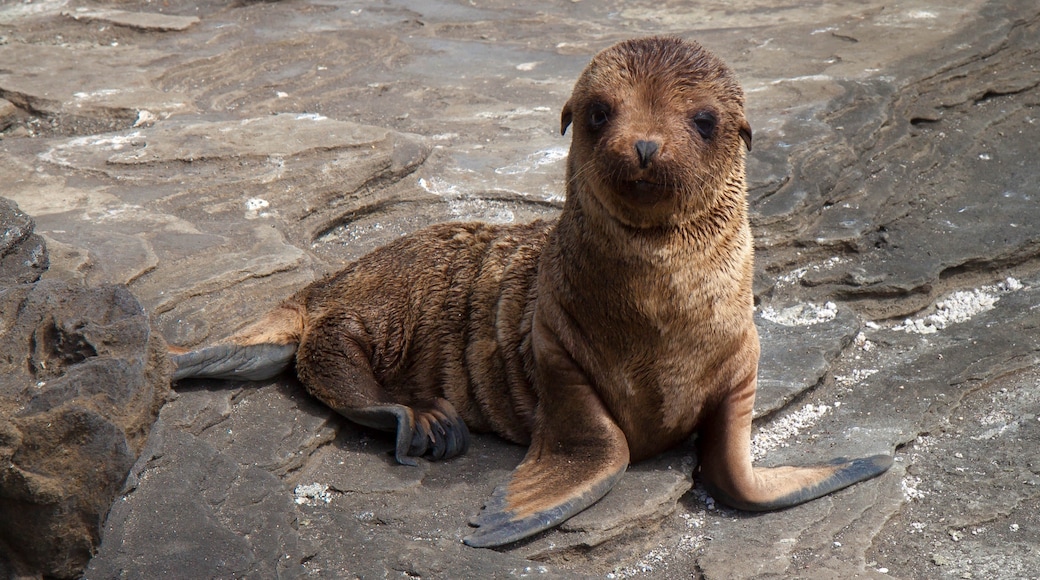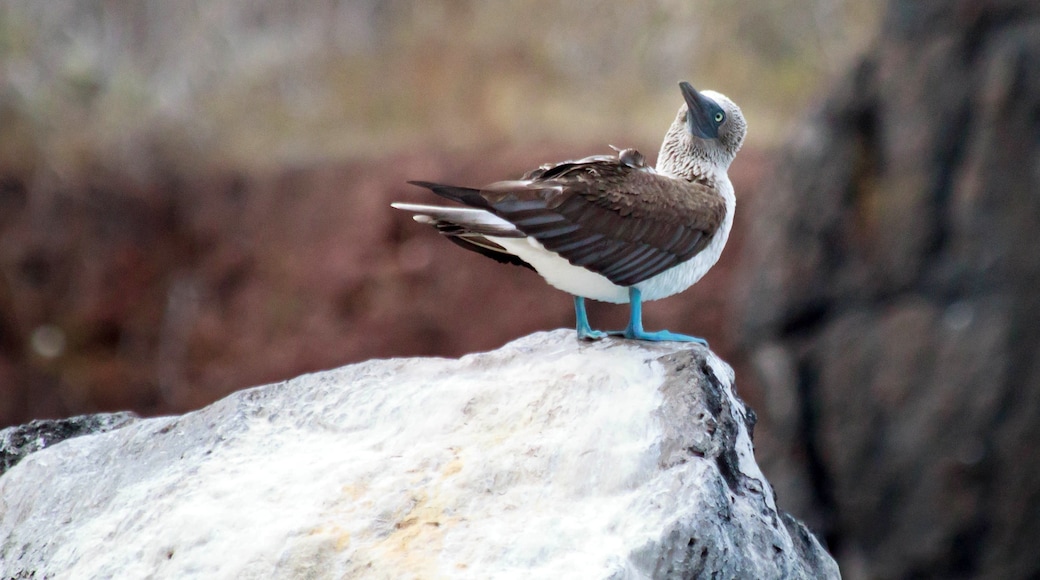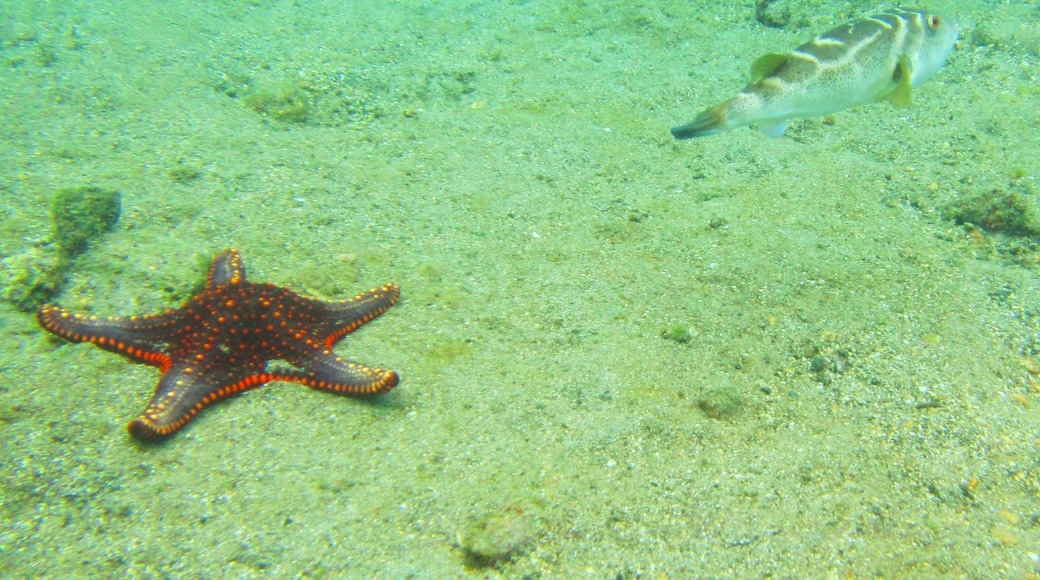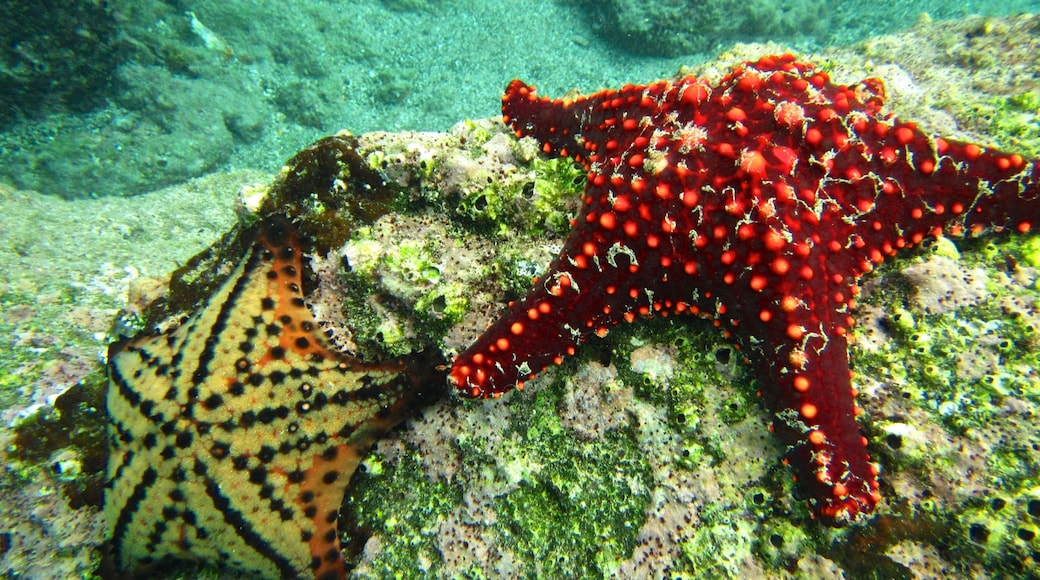The volcanic coastline and red sand of this islet present an interesting contrast to the usual white-sand beaches of the Galápagos.
Discover otherworldly landscapes and colorful wildlife on a hike around Rábida Island (Isla Rábida). Unlike many of the other islands in the Galápagos Islands archipelago, Rábida Island is famous for its eroded hills, volcanic craters and red beaches. The island takes its name from a convent in Andalucía, Spain, where Christopher Columbus stayed before setting off on his voyage around the Americas. It is also sometimes called Jervis Island, after the British admiral John Jervis.
Your exploration of the island starts at its only beach, which is a red-hued stretch of sand on the northern coast. The color is the result of high levels of iron in the surrounding cliffs and rocks. Take a moment to observe the sea lions and iguanas that rest on the sands and in caves. Snorkeling among coral and colorful fish is possible at the eastern end of the beach.
Spot brown pelicans at a nearby lagoon and look up to see Nazca boobies flying above the cliffs. Among the other resident birds are blue-footed boobies, Darwin finches, Galápagos doves and yellow warblers.
Go to the saltwater lagoon behind the beach to see flocks of pink flamingos. They feed here for over 7 hours a day on pink shrimp larvae and water boatmen bugs. Due to environmental changes, flamingo numbers vary each year, with some years attracting none at all.
Follow a trail inland from the beach to further appreciate the moon-like landscapes. Get an aerial view of the coastline from hilltop lookouts. Note the wild Palo Santo trees and the rows of opuntia cactus (prickly pear).
Rábida Island sits to the south of Santiago Island in the center of the Galápagos archipelago. The most convenient way to reach the island is on a multiday island-hopping cruise. Common departure points are San Cristóbal Island and Santa Cruz IslandOpens in a new window.








